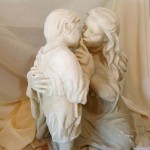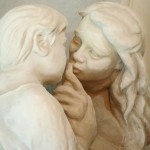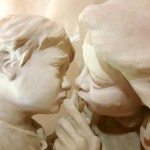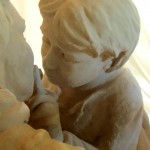Michelangelo’s Pieta, now displayed within St Peter’s, was the first of several carved over his lifetime. This theme of Mother Mary grieving over the crucified Christ had special significance for the artist and continues to resonate a powerful message for us today. The literal translation of the Italian ‘pieta’ is pity; and is the cornerstone of faith as found in Jesus teaching at the ‘Sermon on the Mount’ . Divine Pity as expressed in both Mary and Jesus; one for the other, and the other for all, is the primary theme found within the Beatitudes and the key Virtues.
Within the Pieta, the combined nature of Faith Hope and Love are examined. And these relationships can be best expressed through multiple statues. And so, it is with this in mind that I have started my second Pieta statue, Amare. Over the Fall and Winter months I will build on my new maquette design
.




